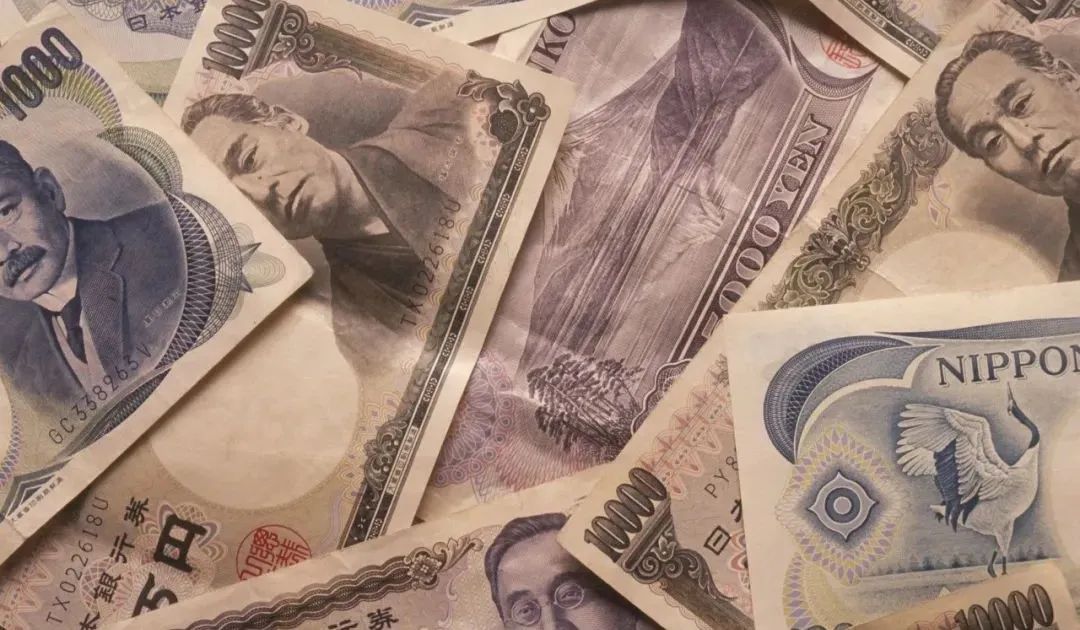Japanese monetary policy is facing a test
Author:Economic Observer Time:2022.07.31

The fierce fluctuations in the yen and the national bond market occurred in the context of the Federal Reserve's interest rate hikes. The direction of monetary policies between Japan and the United States has very different directions, which has aroused the attention of global markets and provided certain reference significance for domestic monetary policy operations.
Author: Zhu Yi Zhao Mengqi
Figure: Tuwa Creative
On July 14, 2022, the yen exchange rate once fell to $ 1 and more than 138 yen. The current yen against the US dollar exchange rate has reached the lowest point in the past 24 years. Especially at 1:54 and 1:55 pm on June 15th, the Japanese Treasury (JGB) futures market suddenly sold a large number of orders. Due to the price decline exceeded the limitation, the transaction was automatically fused twice.
The fierce fluctuations in the yen and the national bond market occurred in the context of the Federal Reserve's interest rate hikes. The direction of monetary policies between Japan and the United States has very different directions, which has aroused the attention of global markets and provided certain reference significance for domestic monetary policy operations.
The changes and effects of Japanese economic policies in the past ten years
1. Gambling in Japan's future Abe Economics era
After the Asian financial crisis in 1998, Japan's economic growth fell into a long -term stagnation, showing the "three lows" characteristics of low interest rates, low inflation, and low growth. Japan's 2012 nominal GDP was about 5 million yen, even 44 trillion yen lower than in 1997. In this context, at the end of 2012, the Japanese Prime Minister Shinzo Abe implemented the so -called "Abe Economics". Through a series of economic reform measures, Japan's inflation expectations and residential income improved, expanded consumption and increase investment policy goals, thereby ending Japan The long -term economic potential growth rate is downward. The launch of the policy has achieved some results in the short term of Japan's GDP, stock price, corporate profits, and decreased unemployment and fiscal deficit. Its main policy includes:
(1) Radical monetary policy. In April 2013, the Bank of Japan announced the implementation of the QQE (quantitative and quality currency loose) plan, which aims to expand the basic currency scale through asset purchases to achieve a 2%inflation target. However, affected by factors such as global oil prices down in 2014, the adjustment of consumer taxes in Japan, and the slowdown of emerging economies, QQE did not achieve a 2%inflation target. To this end, in January 2016, the Bank of Japan introduced negative policy interest rates (NIRP) on the basis of QQE to reduce the short-term policy interest rate (policy target interest rate) to -0.1%, further exacerbating the flatness of the yield curve, and then thereby The profitability of squeezing financial institutions has a tightening effect. Therefore, the Bank of Japan announced the implementation of the yield curve control (YCC) in September 2016 to control the 10-year national bond interest rate in (-0.1%, 0.1%) range, and then expand the control range to (-0.25%, 0.25 0.25 %), And continued to this day. The yield curve control is to change the policy goals from the scale of the basic currency to the control of long -term national debt interest rates, so that the Bank of Japan can make policy adjustments more flexible according to the changes in economic activities, prices, and financial conditions, and take into account short -term policy Interest rate control short -term interest rates, 10 -year government bond interest rate control long -term interest rates, which affects the entire yield curve and enhance the sustainability of currency looseness.
(2) Flexible fiscal policy. Abe Economics uses infrastructure investment to drive the total demand, stimulate investment enthusiasm for tax cuts, and at the same time increase consumption to fill the gap in fiscal expenditure. In the short term, Abe's economics expands fiscal expenditure to fill the supply and demand gap. In early 2013, Japan launched an emergency economic countermeasure framework, combined with local governments and private investment, with a total amount of 20 trillion yen. In 2012, the total debt of the Japanese national government reached 9.97 trillion yen, accounting for about 199.3%of the nominal GDP, rising to 200.1%in 2013, and then at the level below 2013 before 2020.
(3) Actively promote structural reform. In 2013, the Japanese government issued a "regeneration strategy" to propose structural reform measures and goals in the fields of private sector rejuvenation, business environment and globalization, agricultural development, employment, energy, and medical care. Essence The final drafted structural reform plan includes three parts: Japan's industrial regeneration plan, strategic market creation plan and international competition plan.
Through the implementation of the "three arrows" of Abe's economics, the Japanese economy achieved recovery in 2013. The actual GDP growth rate of 1.6%year -on -year was 0.2 percentage points higher than the previous year. At the same time The year -on -year growth rate of the core CPI was 0.4%, which reversed the decline in the past three years. In September 2015, after successfully re -election, Abe also proposed the goal of building a "100 million people's total active society", that is, the so -called "new three arrows", which was the 2020 GDP reached 6 million yen, the total fertility rate rose to 1.8 The above, as well as improving the level of social security, overcoming the supply side constraints brought by the old child, and increasing the potential economic growth rate. However, from the perspective of the specific implementation effect, due to the impact of factors such as the impact of the new crown pneumonia, the nominal GDP in Japan in 2020 was 53.36 trillion yen, and the fertility rate was 1.34. Target.
Second, the Kanada Economics era aimed at rebuilding "new capitalism"
In October 2021, the new Japanese Prime Minister Kishida Kishita took office, facing problems such as the expansion of the gap between the rich and the poor, global warming, and the challenges from authoritarian countries. The core is to build a virtuous circle of economic growth and fair distribution, eliminate the gap between the rich and poor expanded due to the epidemic of new crown pneumonia, and the new society in the era of epidemic in the era of epidemic, which makes the Japanese economy more sustainable and tolerant. Compared with Abe's economics, Kishida's new capitalism pays more attention to both hands to take into account the two hands of "economic growth" and "distribution". In the field of economic growth, Kishida Wenxiong proposed the three core pillars of "realizing science and technology", "the idea of digitalized pastoral urban countries" and "economic security". Realize "common prosperity". In the distribution of private sector, preferential salary -raising enterprises in taxation systems, supervising outsourcing business to prevent pressure -proof squeezing behavior, and provide support for enterprises that improve the minimum wages. In terms of public sector distribution Subsidies are issued to minor citizens to solve practical problems in the existence of parenting families.
3. The effect of Japanese economic policy in the past ten years
One of the important effects of Japanese economic policies is that Japanese government bonds have maintained stability. On the one hand, Japan is the world's largest debt country, and foreign debt is much higher than foreign debt. Its constant revenue and expenditure (mainly composed of two parts: two parts of foreign trade income and expenditure and income and expenditure) maintain an annual earnings (about $ 150 billion in 2021), and the foreign exchange reserves are sufficient (the second in the world). On the other hand, Japanese Treasury (long -term) holders constituted domestically holding in China. The proportion of overseas investors in Japanese Treasury bonds is only about 8%. Even with the short -term securities of the Treasury, the proportion of overseas holdings of Japanese Treasury bonds is only about 12%(2021). In other words, unlike national debt in many countries, about 90 % of the holders of Japanese government bonds are Japanese institutions and individuals in Japan, and they basically belong to internal bonds.
At the same time, Japanese law guarantees the purchase of Japanese Treasury bonds. According to the law, if the price of Treasury bonds has fallen or the golden interest rises too fast, the Bank of Japan can stabilize the price through the purchase of Japanese government bonds in the market, so that the cost of short -term Japanese government bonds has increased significantly. In addition, members of Japanese society are united. If the price of government bonds falls, domestic institutions and individuals in Japan usually will not follow the selling, help the flames, and will help the Bank of Japan to maintain the price.
Although Japan has continued to promote domestic economic structure reform, from the current point of view, Japan's future economic development still faces major hidden dangers. First, Japan's debt level is high. As of the end of May 2022, the scale of Japanese government debt, including national debt, financing, and government short -term securities, reached 12.636 trillion yen, and the Japanese had a government debt of nearly 70,000 yen. The second is the sharp depreciation of the yen exchange rate. Since 2012, the exchange rate of the US dollar against the yen has been depreciated from 86.72 at the end of 2012 to 136.11 on July 22, 2022, with a depreciation of 36.3%.
The current dilemma faced in Japan
Adhering to the loose monetary policy, including quantitative quality and loose and yield curve control, is conducive to pushing inflation expectations, maintaining the international competitiveness of the Japanese yen and the Japanese export industry, and thus driving domestic economic growth. However, if the current global inflation is high and the global major interest rates have risen, the too loose monetary policy and too low interest rates may be greater than profit, which will become a source of instability of the financial market.
1. The yen exchange rate is affected by multiple factors and continues to derogate
Since May 2022, the yen exchange rate has stabilized after two months of continuous depreciation. The US dollar exchange rate at the yen exchange rate has remained below 130 after mid -May, which is 3.1%compared to the previous high. The yen exchange rate has derogated again. Generally speaking, we believe that the depreciation of the yen is mainly affected by four aspects:
(1) Inflation in Japan is under pressure. The prices of Brent and WIT crude oil in June rose to $ 120/barrel, the highest level since March. In March and April, the year -on -year growth rate of PPIs in Japan was close to 10%, a new high since 1981. Although the PPI fell to 9.1%year -on -year, the international oil prices in June made the "input inflation" pressure rolling. The market predicts that Japan's CPI will be higher than the central bank's 2%inflation target for the second consecutive month.
(2) The pressure of interest rates has been picked up. Judging from the 16 trading days before June 22, the 10 -year daily debt interest rate closing price of 12 trading days was higher than 0.25%(the central bank's yield curve control target limit). The rise in daily bond interest rates mainly reflects the market's expectations for the Bank of Japan to change the loose monetary policy, and the long -term loan interest rate of major Japanese banks also increased by 10bps to 1.20%on June 10.
(3) Economic growth is under pressure. The Japanese trade deficit in May was 2.38 trillion yen, which was the second highest in statistics (only below 280 trillion yen in January 2014), and maintained the deficit for 10 consecutive months. Among them, imports in May increased by 48.9%year -on -year to 9.64 trillion yen, reflecting the dual pressure of raw material price increases and the depreciation of the yen. Japan's economic growth is still under pressure, and it has also weakened the market's confidence in the central bank's super loose monetary policy. (4) The return of dollars in the return of dollars increases the risk of selling yen. The US CPI data released on June 10 expects that the market has changed the market for interest rate hikes in the Federal Reserve. The CME interest rate futures market bet on the end of the year at the end of the year jumped to 3.5%. On June 14th, the 10 -year US debt yield increased at the 3.5%mark in the market. The spread of 10 -year US bonds and daily bonds went wide to 323bps, attracting the selling funds to sell the yen, which also exacerbated the depreciation of the yen. 2. The risk of decline in the price of Japanese government bonds increases
At present, the risk of decline in Japanese government bond prices has continued to increase, mainly including the following three factors:
(1) Monetary policy of major western economies has shrunk. Recently, the Federal Reserve ’s June meeting has increased sharply 75bps. The European Central Bank’ s June meeting announced that it is about to raise interest rates for the first time. The monetary policy of major developed economies in the world has entered a tightening cycle one after another. Essence On the eve of the interest rate resolution meeting of the Bank of Japan in June, investors bet that the Bank of Japan may give up the yield curve control (YCC).
(2) aging exacerbated fiscal pressure. Japan is the most aging country in the world. Pension insurance, health insurance, and care insurance systems maintained by public finance have brought a huge burden on Japanese finance (about 40 % of the total government fiscal expenditure of the year). The scale of Japan's government bond issuance is getting larger and larger, the efforts of domestic institutions and individuals have declined, and the shareholding ratio of the Bank of Japan's government bonds has increased (currently over 40 %). Business status and market intervention capabilities.
(3) Japan has been in trade deficit for many years, and foreign exchange reserves have decreased. In the past 10 months, Japan ’s foreign trade continuous deficits, Russian -Ukraine conflicts and Western countries have risen sharply on energy prices in Russia, and have a greater impact on Japan’ s large country.贸易收支的恶化对应带来外汇收入减少,必然对所得收支(对外直接投资、证券投资的收支)产生减投、减收影响,从而逐步削弱日本作为经常收支盈余大国的地位,并Corresponding to reducing domestic and foreign investors' trust in Japanese Treasury bonds.
Considering the above factors, the market suspects the sustainability of the Bank of Japan's loose policy. On June 15, the 10 -year daily debt futures disk created the largest single -day decline in 2013, and triggered the exchange mechanism of the exchange twice. Closing at 0.271%, 2.1 basis points higher than the central bank's target. On June 17, the Bank of Japan issued a statement that the maintenance rate, asset purchase and YCC policy remained unchanged, and continued to buy 10 -year national debt at a rate of 0.25%. At the same time, according to the statistics of Bloomberg, on June 17, the Bank of Japan purchased 10.9 trillion yen of national debt, which was also the highest level in history, making the 10 -year bond interest rate fell below 0.25%.
3. The Japanese financial market faces three major "contradictions"
(1) The contradiction between inflation and global inflation in Japan. Since the beginning of this year, the price of raw materials has risen sharply, while Japan has high dependence on the import of raw materials. The pressure of "input inflation" cannot be ignored. The global inflation has been conducted further to Japan. The fluctuations will continue.
(2) Contradiction between the Bank of Japan and the financial market. The Bank of Japan faces the "dilemma" choice: On the one hand, the Bank of Japan pursues "Abe Economics" to maintain low interest rates to support weak economies and tolerate "weak yen" to boost exports. On the other hand, Japan's inflation pressure is gathered, the excessive depreciation of the yen has increased import costs, and also exacerbated the financial market fluctuations. In the context of other developed economies entering the tightening cycle, the market has increased their questions about the Bank of Japan. At the same time, the increase in domestic fiscal revenue and expenditure pressure will further stimulate the market's expectations to accelerate the transformation of monetary policy.
(3) The contradiction between "stagnation" and "recession" in the United States. After the Russian -Ukraine conflict, the pressure of inflation in the United States continued to rise, the urgency of the Fed's interest rate hike continued to rise, corresponding to the US debt interest rates continued to explore, and the "US dollar return" pressure faced by the Japanese market continued to accumulate. With the increasing uncertainty of economic trends such as the United States and other economies, the volatility of the yen exchange rate and daily debt will continue.
The impact of the economic and financial situation in Japan on my country
Japan's unconventional loose monetary policy can play a short -term stimulus. However, with the implementation of policies, excessive easing will weaken marginal effects, increase the difficulty of implementing the implementation of central bank monetary policy, and then become the root cause of the financial market fluctuations. Compared with Japan, my country still belongs to a emerging economy with relatively sufficient labor, strong attraction to foreign capital, and high economic potential growth rate. Therefore, the looseness of the marginal monetary policy can form more effective stimuli and promote economic growth, but If you continue to adopt excessive loose monetary policy, or it is not conducive to the steady and orderly development of the domestic economy. On the whole, the impact of changes in Japan's financial situation on my country is mainly reflected in the following two aspects.
1. In the short term, in terms of the overall economic impact of my country's economy, Japanese Treasury bonds, as of June, the Japanese central bank held more than 50%of the total number of Japanese government bonds. The remaining share was basically held by Japanese institutions and individuals. There is a small share. Even if the price of Japanese Treasury bonds has further fallen, the direct impact on my country's economy and financial markets is small. In terms of the yen exchange rate, the most intuitive change brought about the decline in the yen is that Japan ’s export costs are reduced and import costs have increased, which may have a certain impact on my country's import and export. However, from the actual situation, Japan's imports in May increased by 20.52%year -on -year, an increase of 25.8%month -on -month. The overall import and export data still showed a rise and did not fluctuate. It is about 5%, and the impact on imports and exports in my country at this stage is relatively limited.
2. In the long run, it has certain warning significance for my country's economic development
(1) Avoid falling into a contraction cycle. The main reason for Japan to adopt the counter -cyclical monetary policy is that Japan's long -term currency tightening for more than 20 years. Although the Japanese government has previously adopted a quantitative easing policy, it has not changed the dilemma of low fertility rate, low willingness to invest in Japanese society, and enhance economic atrophy. That is, the economic downturn → the overall willingness to consume in the society → the income of corporate income → the willingness to social investment → the economic downturn intensified. The reduction in the overall consumption willingness of society has made Japanese society gradually "lying flat", and the declining childization and low desires have exacerbated the reduction of the labor population, further deteriorating the original production and consumption problems, making the overall economy of Japan depends on external stimuli and government investment. At present, domestic fertility, consumption and other issues have also appeared. In the future, we need to continue to introduce relevant policies for improving fertility and stimulating consumption to ensure that my country's economy is operating in a reasonable range.
(2) "Gambling" monetary policy will have a greater impact on the socioeconomic economy. After the global monetary policy turned, the Japanese central bank had to make a choice in "impossible triangle (free capital flow, fixed exchange rate, and monetary policy independence). The sharp depreciation of the yen can be regarded as the result of the Japanese central bank's choice of capital liquidity and abandoning the stable exchange rate. On July 21, the Japan Central Bank announced a loose policy that represents Japan's consumption stimulus on behalf of Japan to achieve its goal of deflation, which also means that the sacrifice of the yen exchange rate will continue.
In the case of the continuous and rapid depreciation of the yen, the overall import and export trade in Japan is still inferior to excellent, and it is difficult to reverse the trend. According to the trade data of May, Japan's exports of exports to the United States, the European Union, Asia and China still have a growth rate of 15.8%year -on -year, and the export amount is in normal interval. However, the total amount of imported goods in Japan showed a blowout trend, an increase of 48.9%year -on -year. In the context of global inflation, the devaluation of the yen accelerated the deterioration of the commodity trade deficit. Judging from the frequent Japanese account data in February to May, Japan's commodity trade deficit expanded significantly during the depreciation of the yen, respectively, with 761.1 billion yen, 561.9 billion yen, 986.1 billion yen, and 238.7 billion yen, respectively. Among them, the squeezing effect of imported companies in Japan is particularly serious. From March to May, the rising prices in Japan were significantly lower than the import price month-on-month. This shows that it is difficult for Japanese companies to pass the cost of importing imports to the downstream. If the overall social level of consumption stimulation is not achieved in the end, the "gambling" will expand the impact of the epidemic on Japanese companies and exacerbate the downturn in Japan.
(The author works for CITIC Bank's asset -liability department, and the article only represents the author's personal point of view)
Let state -owned enterprises dare to work, private enterprises, and dare to invest in foreign companies. What is the 100 billion -level real estate bailout fund behind the dare to vote: the rescue project does not save the enterprise to fight the Indian market, and the Chinese mobile legion retreats or guard?


- END -
Welfare of tickets | Is there a domineering dad with "Huang Bo" in your family?

Family fantasy comedy film Mozart of Outer Space starring Chen Sicheng, starring H...
Naked ticket 260 yuan!Ezhou Huahu to Beijing Daxing Airlines tickets on sale

Jimu News reporter Shi QianOn July 10, Jimu News reporters were informed that Chin...